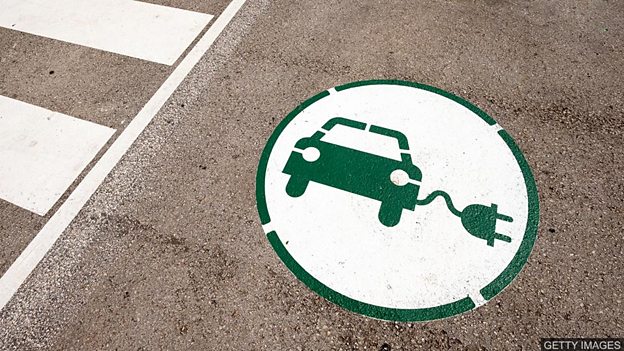随身英语
The future of electric cars 电动汽车的未来

去年,英国宣布从2030年起禁止销售新的汽油和柴油汽车,这引起了人们的广泛关注。但是,说起来容易做起来难,全球汽车产业电动化还有很长的路要走。本文浅谈电动汽车存在的问题及可能的解决方案。
词汇:transport 交通运输
We are all aware of the damaging pollution that’s created by driving petrol and diesel vehicles. Many of the world’s cities are clogged with traffic, creating fumes containing gases such as nitrogen oxides. The solution for a cleaner, greener future could be electric vehicles. But how optimistic should we be?
There was much excitement last year when the UK government announced it will ban the sale of new petrol and diesel cars from 2030. But is that easier said than done? The road to global traffic being totally electric is still a long way off. Currently, battery life is an issue – a fully charged battery won’t take you as far as a full tank of petrol. There are also limited numbers of charging points to plug an EV into.
Of course, technology is always improving. Some of the biggest tech companies, like Google and Tesla, are spending huge amounts of money developing electric cars. And most of the big car manufacturers are now making them too. Colin Herron, a consultant on low-carbon vehicle technology, told the BBC: “The big leap forward will come with solid state batteries, which will appear first in mobile phones and laptops before they progress to cars.” These will charge more quickly and give cars a bigger range.
Cost is another issue that may deter people switching to electric power. But some countries offer incentives, such as cutting prices by reducing import taxes, and not charging for road tax and parking. Some also provide exclusive lanes for electric cars to be driven on, overtaking traditional cars which might be stuck in jams. These kinds of measures have made Norway the country with the most electric cars per capita at more than thirty electric cars per 1000 inhabitants.
But Colin Herron warns that ‘electric motoring’ doesn’t mean a zero-carbon future. “It’s emission-free motoring, but the car has to be built, the battery has to be built, and the electricity does come from somewhere.” Maybe it’s time to think about making fewer journeys or using public transport.
词汇表
pollution 污染
petrol 汽油
diesel 柴油
vehicle 车辆,交通工具
traffic 交通量
fumes (有害的)气体,烟雾
nitrogen oxides 氮氧化物
electric vehicle (EV) 电动汽车
battery life 电池使用时间,电池寿命
tank (盛放液体或气体的)容器,罐,箱
charging point 充电桩
range 行驶距离
electric power 电力
road tax 公路税
parking 停车
lane 车道
jam 交通堵塞
electric motoring 电动车
zero-carbon 净零排放
emission-free 零排放,无排放的
public transport 公共交通
测验与练习
1. 阅读课文并回答问题。
1. When will the ban on selling petrol and diesel cars in the UK begin?
2. What are needed to recharge the batteries in electric vehicles?
3. True or false? According to Colin Herron, putting solid-state batteries in electric cars first will be a ‘great leap forward’.
4. Why might electric cars not get stuck in traffic jams in the future?
5. Will driving an EV be emission-free?
2. 选择意思恰当的单词或词组来完成下列句子。
1. Sorry I’m late – there was terrible _______ on the motorway.
jam range traffic highway
2. The company offers some great _______, such as free healthcare and gym membership.
incentivising incentive incentives inventively
3. The _______ of a modern jet aircraft is far greater than the old propeller planes.
diesel battery life low-carbon range
4. The _______ in the city was so bad, I couldn’t even see the other side of the road.
battery emission-free petrol pollution
5. The electric buses in the city are _______, so the air seems much cleaner.
free-emission free-carbon emission-free carbon emission
答案
1. 阅读课文并回答问题。
1. When will the ban on selling petrol and diesel cars in the UK begin?
The UK government announced it’ll ban the sale of new petrol and diesel cars from 2030.
2. What are needed to recharge the batteries in electric vehicles?
Charging points are needed to recharge the batteries in electric vehicles.
3. True or false? According to Colin Herron, putting solid-state batteries in electric cars first will be a ‘great leap forward’.
False. He says:“The big leap forward will come with solid state batteries, which will appear first in mobile phones and laptops before they progress to cars.”
4. Why might electric cars not get stuck in traffic jams in the future?
Because, in some places, they will be allowed to drive in exclusive lanes, overtaking traditional cars which might be stuck in traffic jams.
5. Will driving an EV be emission-free?
Driving an EV will be emission-free. However, the car, the battery, as well as producing the electricity that powers the car, could all create emissions. So electric motoring does not mean a zero-carbon future.
2. 选择意思恰当的单词或词组来完成下列句子。
1. Sorry I’m late – there was terrible traffic on the motorway.
2. The company offers some great incentives, such as free healthcare and gym membership.
3. The range of a modern jet aircraft is far greater than the old propeller planes.
4. The pollution in the city was so bad, I couldn’t even see the other side of the road.
5. The electric buses in the city are emission-free, so the air seems much cleaner.



